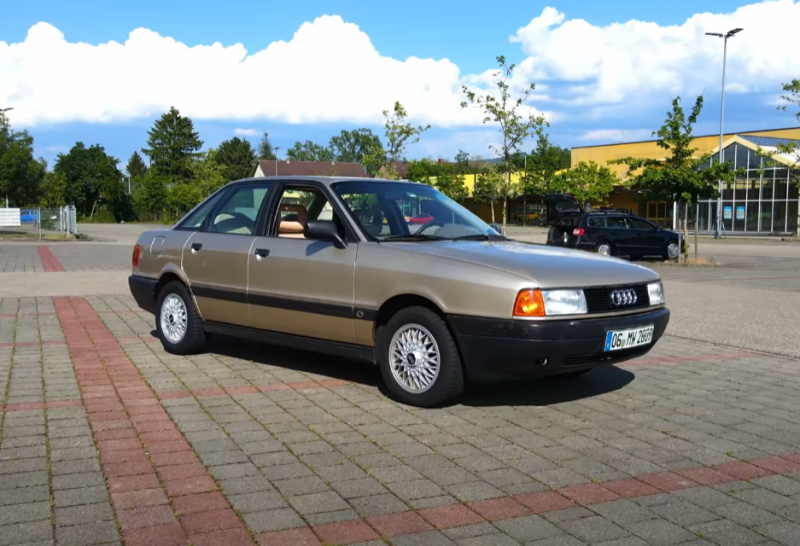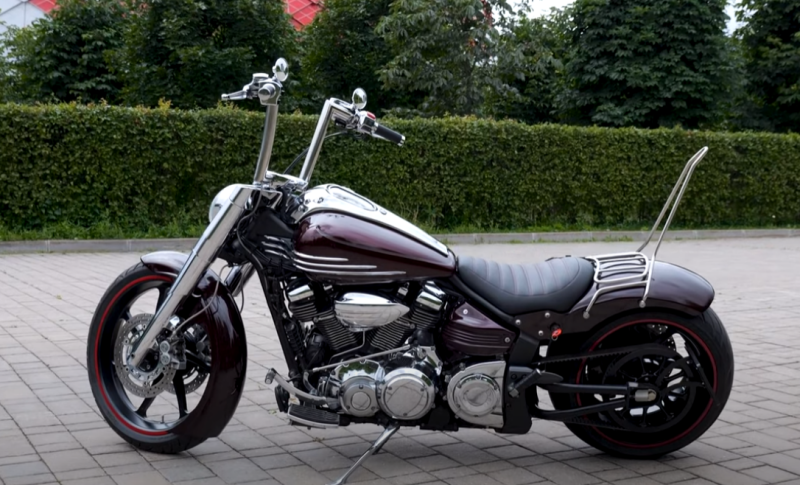But unfortunately, Miller, a mechanical genius, turned out to be a bad businessman. After the stock market crash, Harry went bankrupt. All rights and equipment for the production of motors were received by Fred Offenhauser, who was responsible for production at Miller. From 1937 to 1941, Offenhauser engines managed to win the Indy 500 three times, but at the end of World War II, Offenhauser decides to retire, and sells the company to Lou Meyer and Dale Drake. From now on, the company is called Meyer & Drake, but the engines have retained their former name.
Dominator
After the War, Offy seemed to have found a second wind: from 1947 to 1964, cars equipped exclusively with Offenhauser engines won the Indianapolis 500! What's more, from 1950 to 1960, offy-powered roadsters took the entire podium at the finish line, and lost only one qualification. Pole position was won by Fred Adabashian in 1952, in a Cummins Diesel Special.
 The classic American roadster for Indianapolis, the Bardahl Special, was equipped with an Offenhauser engine "laid" on its side. Photo: Youtube.com
The classic American roadster for Indianapolis, the Bardahl Special, was equipped with an Offenhauser engine "laid" on its side. Photo: Youtube.comThe engine of the fifties model was an in-line monoblock atmospheric four, 4.4 or 4.2 liters, with a capacity of 400 horsepower. The American "roadsters" of those years: Watson, Kuzma and Kurtis-Kraft, used the Offenhauser unit, shifted to the left from the center of the chassis, and were equipped with a two-speed gearbox to win.
Leo William Goossen
Without this man, the story would be incomplete, because it was Goossen who developed for Miller what would later become known as the “Offenhauser engine”. Leo came to Miller on the recommendation of Walter Chrysler himself, at that time the head of the Buick production department, becoming the link between Miller and Offenhauser.
Harry was madly in love with "pieces of iron", but due to lack of education he could not explain to the engineers what he wanted from them. With the advent of the talented draftsman and engineer Goossen, Miller could easily generate ideas that he embodied on paper and handed over to Fred Offenhauser. Thus, for example, the front-wheel drive Miller 91 Perfect Circle Special and the Miller V16 were born - works of engineering art.
 Miller 91 FWD Perfect Circle Special 1927. Photo: Youtube.com
Miller 91 FWD Perfect Circle Special 1927. Photo: Youtube.comDuring his long career, Leo Goossen has designed engines for: Harry Miller, Fred Offenhauser, Art Sparks, Bud Winfield, Lou Meyer and Dale Drake...and also designed V8s for Howard Keck.
Nothing is eternal under the Moon
Ford came to Indianapolis in the early sixties. First with the lower, and later with the DOHC "eight" of the new generation. By the middle of the decade, it was believed that the era of four-cylinder Offenhauser engines was over, and the era of the Ford V8 had begun. After all, with the same working volume, Offy has no advantages over the Ford Fairlane.
 The main rival of Offenhauser engines in the fifties was the Novi V8. Due to several severe accidents, cars with this engine have gained a reputation for leaving widows. Photo: Youtube.com
The main rival of Offenhauser engines in the fifties was the Novi V8. Due to several severe accidents, cars with this engine have gained a reputation for leaving widows. Photo: Youtube.comAnd besides, the in-line four could not be made a loaded chassis element, unlike the same Fords. But in 1966, something happened that allowed Offenhauser to return to the top.
Offenhauser strikes back!
In 1965, Louis Meyer sold his part to Meyer & Drake, believing that the engine had run its course. But Dale Drake and Leo Goossen did not think so ... and a year later a revolution took place in America: a turbocharger appeared on Offenhauser engines! One of the first people to try the Offy-Turbo was Bobby Anzer.
 Offenhauser turbocharged. In IndyCar, the turbo for gasoline engines was introduced ten years before Formula 1. Photo: Youtube.com
Offenhauser turbocharged. In IndyCar, the turbo for gasoline engines was introduced ten years before Formula 1. Photo: Youtube.comThe motor made an indelible impression, but the American Huffaker chassis did not allow the power of the revolutionary unit to be realized.
It was the worst car I have ever driven! Huffaker made a serious miscalculation in development: the chassis was sorely lacking in rigidity, and the only thing that saved that car was the turbocharged engine. It was only thanks to the engine that I was able to qualify, because when the turbo was turned on, this “son of a bitch” flew like a scalded devil!
— Bobby Anzer.
In 1968, after a 3-year hiatus, the Offenhauser engine wins the Indy 500 again! This was done by Bobby Anzer. In combination, it was also the first victory of a turbocharged engine in the Indianapolis 500.
Offy vs Turbins
In the second half of the sixties, Offenhauser engines had to face a much more serious challenge than the atmospheric "eight" Ford. Andy Granatelli, the head of the oil company STP, brought a Paxton-Turbocar with a gas turbine to the Old Brick Shop! Parnelli Jones was on his way to victory, but retired a few laps before the finish line due to bearing failure in the transmission. The winner was AJ Foyt, in a Coyote-Ford.
 Bobby Anzer, powered by a turbocharged Offenhauser engine, won the 500 Indy 1968. Photo: Youtube.com
Bobby Anzer, powered by a turbocharged Offenhauser engine, won the 500 Indy 1968. Photo: Youtube.comThe following year, Andy Granatelli and Colin Chapman entered three turbocars: one Paxton and two Lotus-56s. The only piston engine that managed to resist them was Offenhauser. True, there were some tricks here. Here's what Bobby Anzer had to say about it:
One day our chief mechanic, Jude Phillips, called me and said that he managed to find "a little more power." Of course I didn't believe it! Then Jude explained that he added 10% nitromethane to the fuel.
With this thing, Offy turned into King Kong! No one knew that we were adding nitromethane, but that's what allowed us to fight those damn "gas turbines".
After 8 laps after the start, I easily passed Leonard's Lotus-56. It turned out to be so simple that I thought it was funny! I deliberately waited and overtook the "turbine" in front of the main stand, in front of an upset Andy Granatelli.
With this thing, Offy turned into King Kong! No one knew that we were adding nitromethane, but that's what allowed us to fight those damn "gas turbines".
After 8 laps after the start, I easily passed Leonard's Lotus-56. It turned out to be so simple that I thought it was funny! I deliberately waited and overtook the "turbine" in front of the main stand, in front of an upset Andy Granatelli.
Bobby Anzer, riding the Eagle-Offenhauser, crossed the line first, leading 127 laps out of XNUMX. And this despite the fact that at the beginning of the race his gearshift lever broke, and Bobby rode the whole race in fourth gear.
I've got the power!
When McLaren decided to build a car for the USAC Champ Car series, they chose the Offy because of its impressive performance and legendary endurance. The British tested the Offenhauser engine on a dyno and got 959 horsepower at 7600 rpm. And this is with a boost pressure of 2.5 bar, by the standards of motorsport - minuscule! For example, in 1988, with the same boost pressure, a Formula One Honda RA168E engine developed "only" 1 horses.
 The Eagle 7200 Offenhauser is one of the best indica cars of the early seventies. Photo: Youtube.com
The Eagle 7200 Offenhauser is one of the best indica cars of the early seventies. Photo: Youtube.comDan Gurney's AAR team got significantly more impressive numbers, though it happened by accident. During the tests, the turbocharger bypass valve jammed, and the boost pressure reached 10 bar! Power? 1400 horsepower at 10200 rpm!
The fact that the Offenhauser withstood such pressure and didn't explode... isn't really surprising at all. Indeed, by that time, Leo Goossen, exclusively for AAR, installed two oil pumps on the engine! Of course, they didn’t compete at such a level in races, limiting themselves to delivering 900-1200 horsepower.
Swan Song Offy
It seemed that Offenhauser would reign forever. But in 1973, "a spark jumped out of which a flame flared up." Literally. On the first laps of the Indy 500, a terrible accident occurred, as a result of which David Walter's car was literally torn in half. The bolide, revolving wildly, began to pour flaming fuel all around. Including spectators in the stands...
After this accident, USAC imposed restrictions on the size of the rear wings (then already featured in the Indycar), boost pressure, fuel consumption, and the size and location of the fuel tanks. The new rules hit Offenhauser hardest of all, which was notable for its excellent fuel appetite!
 Once upon a time, the McLaren team built their own chassis for the Indycar. Shown here is the M16C-D Offenhauser, driven by Johnny Rutherford. Photo: Youtube.com
Once upon a time, the McLaren team built their own chassis for the Indycar. Shown here is the M16C-D Offenhauser, driven by Johnny Rutherford. Photo: Youtube.comDuring the discussion of the new regulations, Foyt (Ford-Foyt) insisted on the lowest boost pressure, and Drake (Offenhauser) insisted on the highest. Representatives of Porsche settled down between them. Foyt's point of view won out. As a result, Porsche refused to create an engine for the Indycar at all, believing that they would be uncompetitive with such a low boost pressure.
There would be no happiness, but misfortune helped
Patrick Racing, who was a big fan of Offenhauser engines, paid for the work to adapt the engine to the new rules. This is how DGS (Drake, Goossen, Sparks) appeared - the latest version of the venerable Offy. The victories in Indianapolis of Eagle and McLaren cars equipped with these engines continued until 1976, and among the pilots who preferred DGS there were such aces as:
✅ Mark Donoghue
✅ Gordon Johncock
✅ Johnny Rutherford
✅ Bobby Anzer
The last time the Offy engine won at the Old Brick House was in 1976, bringing to victory Johnny Rutherford, who spoke at McLaren. Forced to start 25th, the Lone Star took the lead with 59 laps to go, 22 seconds ahead of second-place finisher Bobby Unser. Rutherford's winning speed was a record 253,4 kilometers per hour!
 Gordon Johncock (car #20) is the last Jedi to win with an Offenhauser engine. Photo: Youtube.com
Gordon Johncock (car #20) is the last Jedi to win with an Offenhauser engine. Photo: Youtube.comWith the advent of the powerful and economical Cosworth DFX engine in the IndyCar, it became obvious that the days of Offy, in any of its variants, were numbered. In 1978, Gordon Johncock brought Offenhauser's final victory. Offy engines lasted in the Indycar right up to 1983, although the Vollstedt Racing team, which performed with this engine, could not score a single point.










